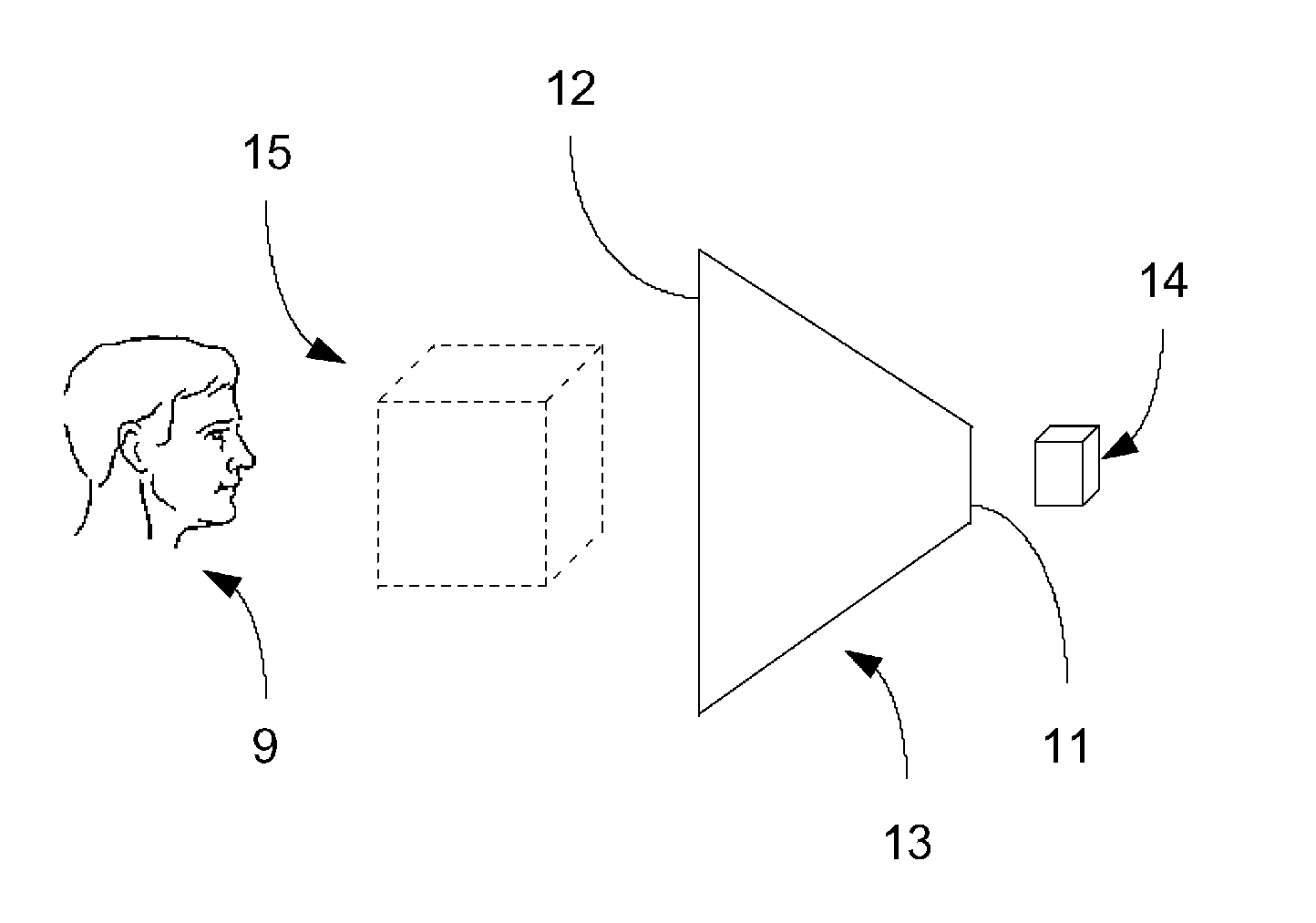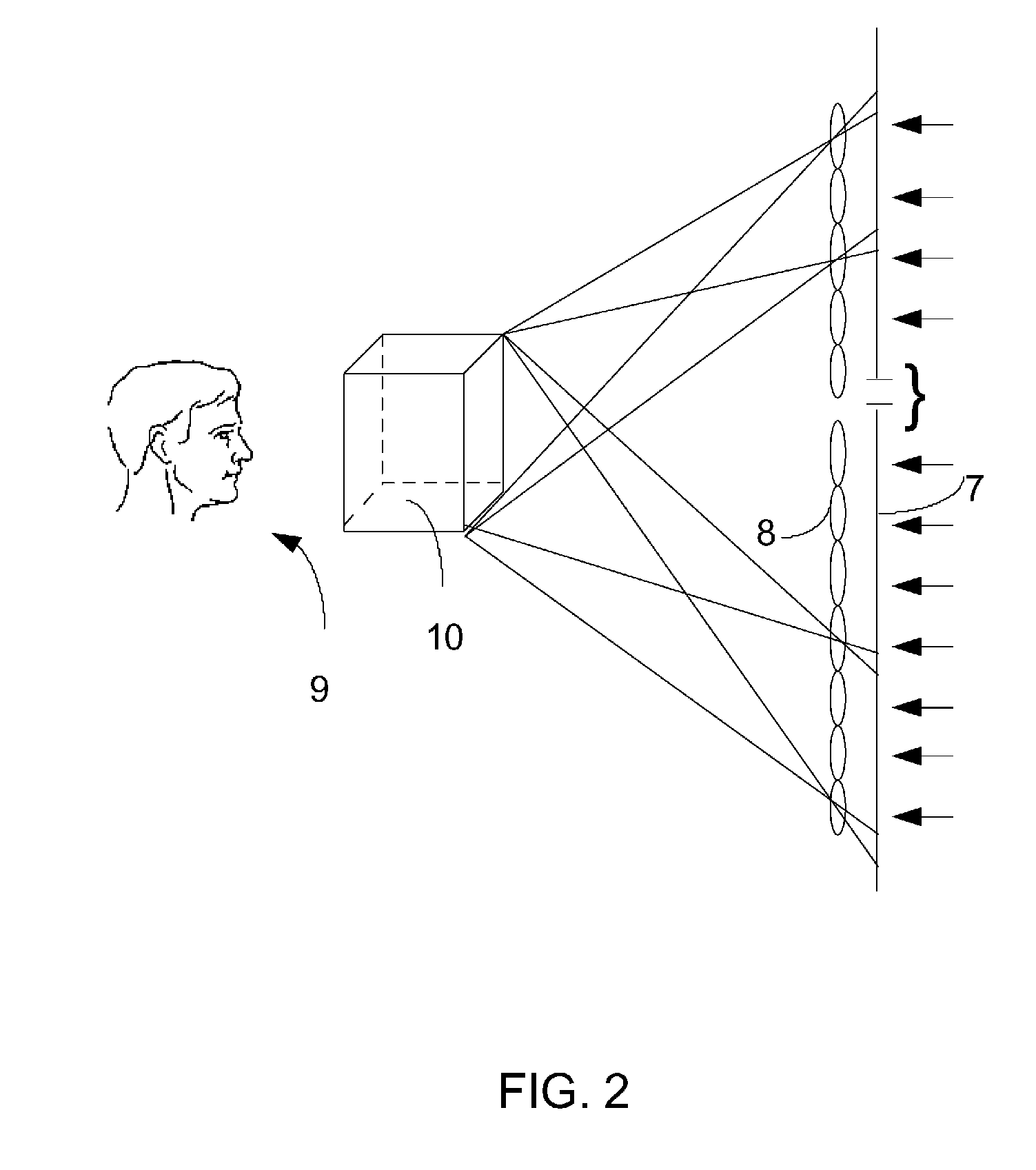Modular integral magnifier
a module-integral magnifier and magnifier technology, applied in the field of modules-integral magnifiers, can solve the problems of not being popular, not being created by a stereoscopic process, and not being continuous,
- Summary
- Abstract
- Description
- Claims
- Application Information
AI Technical Summary
Benefits of technology
Problems solved by technology
Method used
Image
Examples
first embodiment
[0091]FIG. 4 shows how the Present Invention would be used to display a magnified image. In the figure, observer 9 sees magnified image 15 reconstructed from unmagnified object or scene 14. Observer 9 is closer to and looking at matrix lens array 12. Unmagnified object or scene 14 is positioned closer to matrix lens array 11. Magnifying or enlarging optics are contained within transmigrator 13 and are not shown in the figure.
[0092]The separation characteristic is either a vector or a two dimensional matrix. There are as many elements in each dimension of the matrix as there are elemental images in the integral frame. If the integral frame is uni-dimensional (i.e., comprised of a linear array of elemental images), then the matrix is a vector, and the number and arrangement of elements of the vector is the same as the number and arrangement of elemental images in the integral frame. The value of the leftmost element of that vector is twice the distance from the leftmost edge of the le...
second embodiment
[0103]An exemplary instance of the Present Invention is shown in FIG. 11(b). In the figure, the output planar face of a CRT 28 displaying an integral frame (or frames) is bonded to small face 3 (not shown in the figure) of transmigrator 13. The image of the integral frame from the CRT is magnified within transmigrator 13 and processed by matrix lens array 12 to produce a reconstructed three-dimensional image represented by the integral frame.
[0104]FIG. 11(c) shows one face of a liquid crystal display (LCD), 30, bonded to the surface of the small planar face of the device. Illumination of the LCD occurs externally on its non-bonded face by light rays 26. LCD 30 modulates the light rays by means known to those of ordinary skill, and produces a display of an integral frame. The integral frame is magnified within transmigrator 13 and processed by matrix lens array 12 to produce a reconstructed three-dimensional image represented by the integral frame.
[0105]FIG. 11(d) shows one face of L...
PUM
 Login to View More
Login to View More Abstract
Description
Claims
Application Information
 Login to View More
Login to View More - R&D
- Intellectual Property
- Life Sciences
- Materials
- Tech Scout
- Unparalleled Data Quality
- Higher Quality Content
- 60% Fewer Hallucinations
Browse by: Latest US Patents, China's latest patents, Technical Efficacy Thesaurus, Application Domain, Technology Topic, Popular Technical Reports.
© 2025 PatSnap. All rights reserved.Legal|Privacy policy|Modern Slavery Act Transparency Statement|Sitemap|About US| Contact US: help@patsnap.com



